Continuing our Flower Power series….
Birch
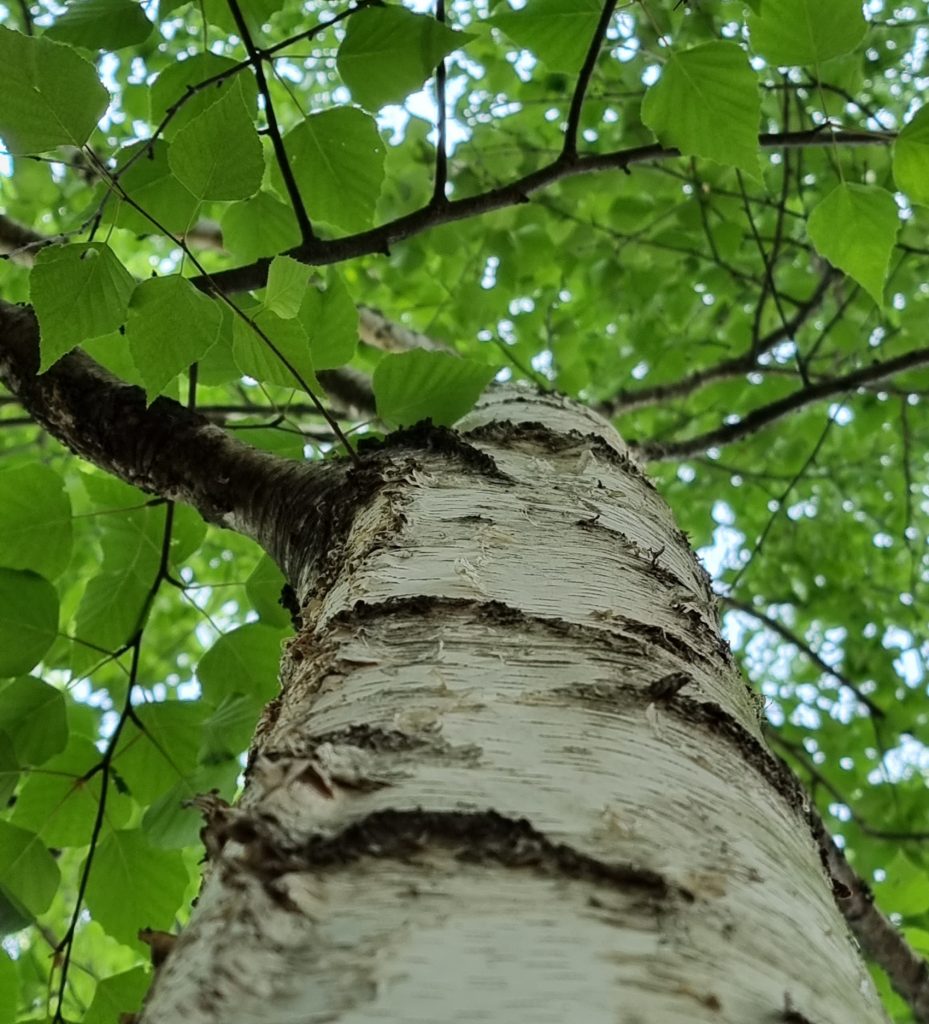
Birch trees, sophisticated and stately, are often small to medium-size trees or shrubs native to the northern temperate climates of North America, Europe and Asia. They are classified as deciduous hardwood trees of the genus Betula in the family Betulaceae.
Most people think about birch trees as having white bark, but there are about 60 different species. The distinctive colors of the birch species are often adopted as their common name such as: white birch, silver birch and the same with black, yellow and gray.
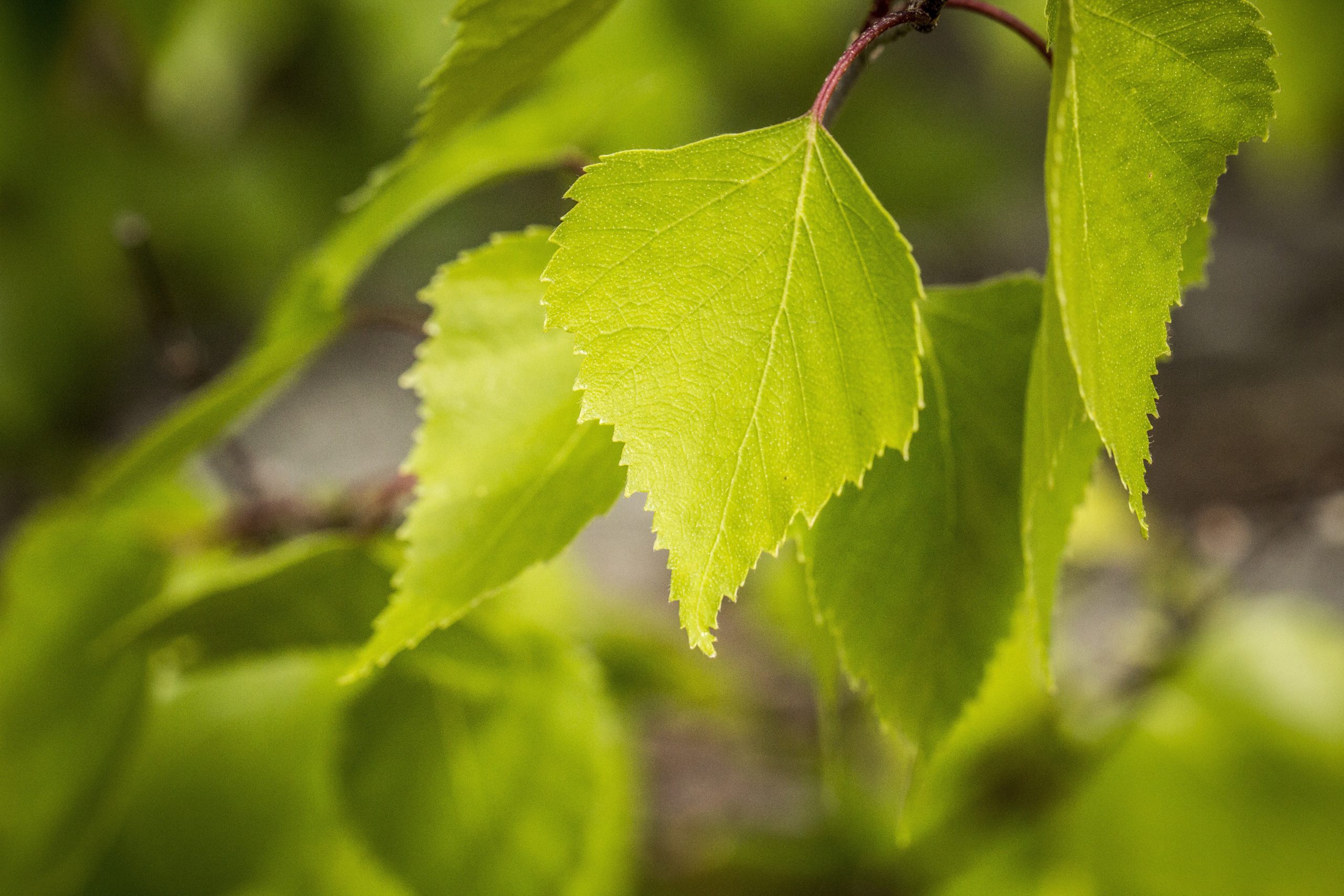
If you know what to look for, birch trees can be identified by their leaves in spite of a similarity to beech or alder trees. There are some common themes among the species: bright green when they emerge (the color darkens in a week or two), thin, shiny and flat. Most of them have oval-or triangular-shaped leaves, but the trick is to check along the edges and you’ll see they are serrated. All North American birches turn a glorious yellow in the fall.
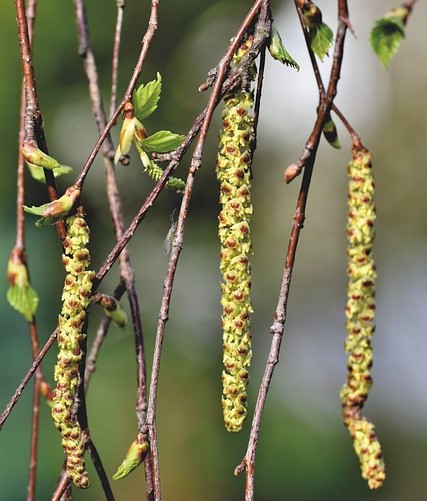
The male and female flowers of birch trees are separate catkins on the same branch. In late summer all types of birch produce drooping male catkins near the tips of the twigs or longer shoots. (see image above) The upright, cone-like female catkins appear in the spring along with the emerging leaves. Fertilization happens when pollen is carried to the female via the wind. The female catkins release winged seeds (samaras) once they mature.
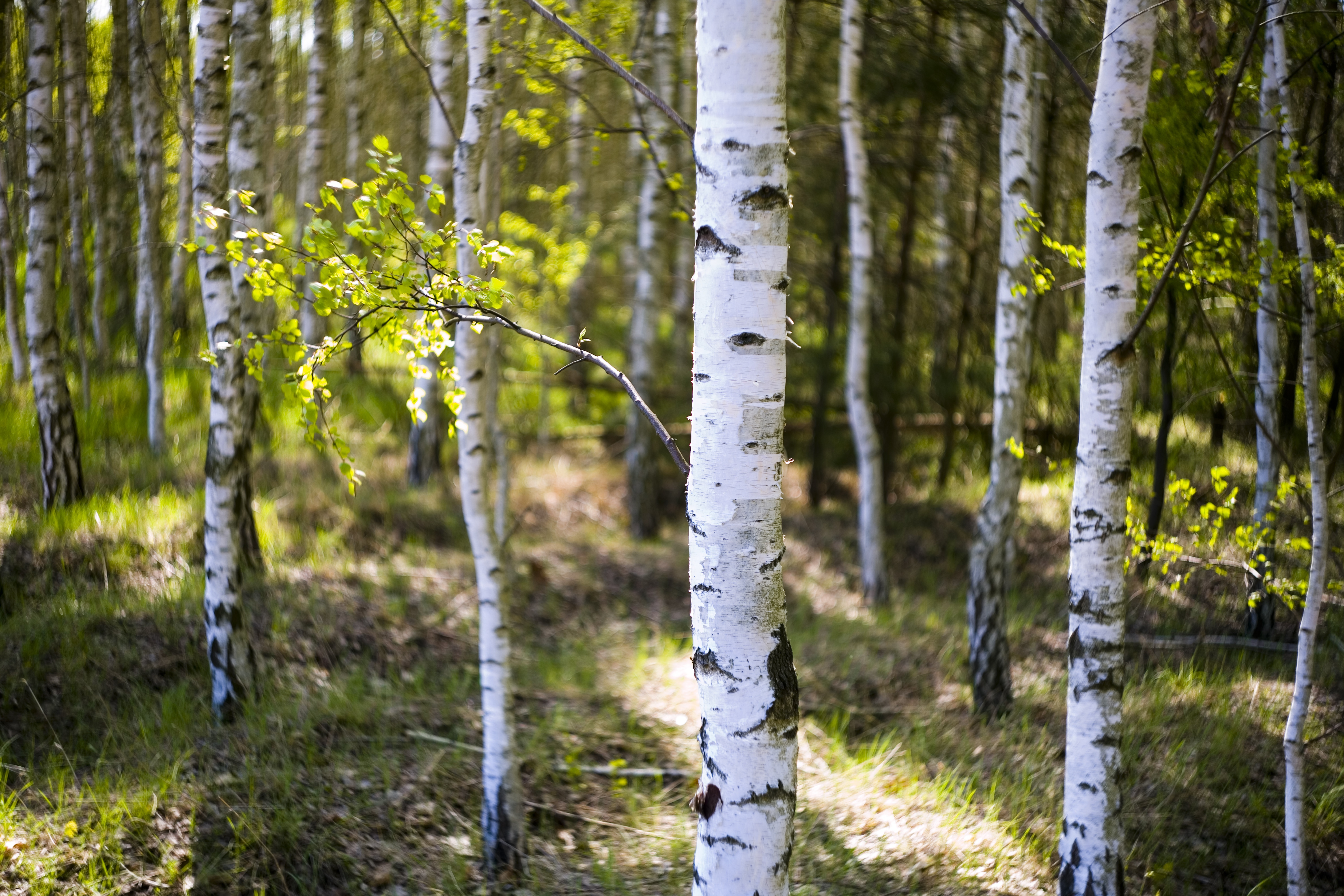
Most everyone has an idea of what a birch tree looks like with its light-colored bark that separates into papery plates and marked by dark, horizontal lines. Those dark, horizontal lines are called lenticels.
Lenticels provide an intriguing insight into plant anatomy. The word itself comes from Latin and is associated with its lenticular or lens-like shape. The shape of lenticels is one of the ways trees are identified. Not all trees have discernable lenticels, but the birch is one where they are quite distinctive.
It is commonly known that trees exchange gases (breath) through their leaves, pulling in carbon dioxide and releasing oxygen. But respiration happens in the rest of the tree tissues also. The bark of trees and shrubs act as a protective layer to keep insects and diseases from getting to the interior structure. Lenticels are like “little windows” or portals in the bark that let the tree breathe in spite of the bark’s protective covering.
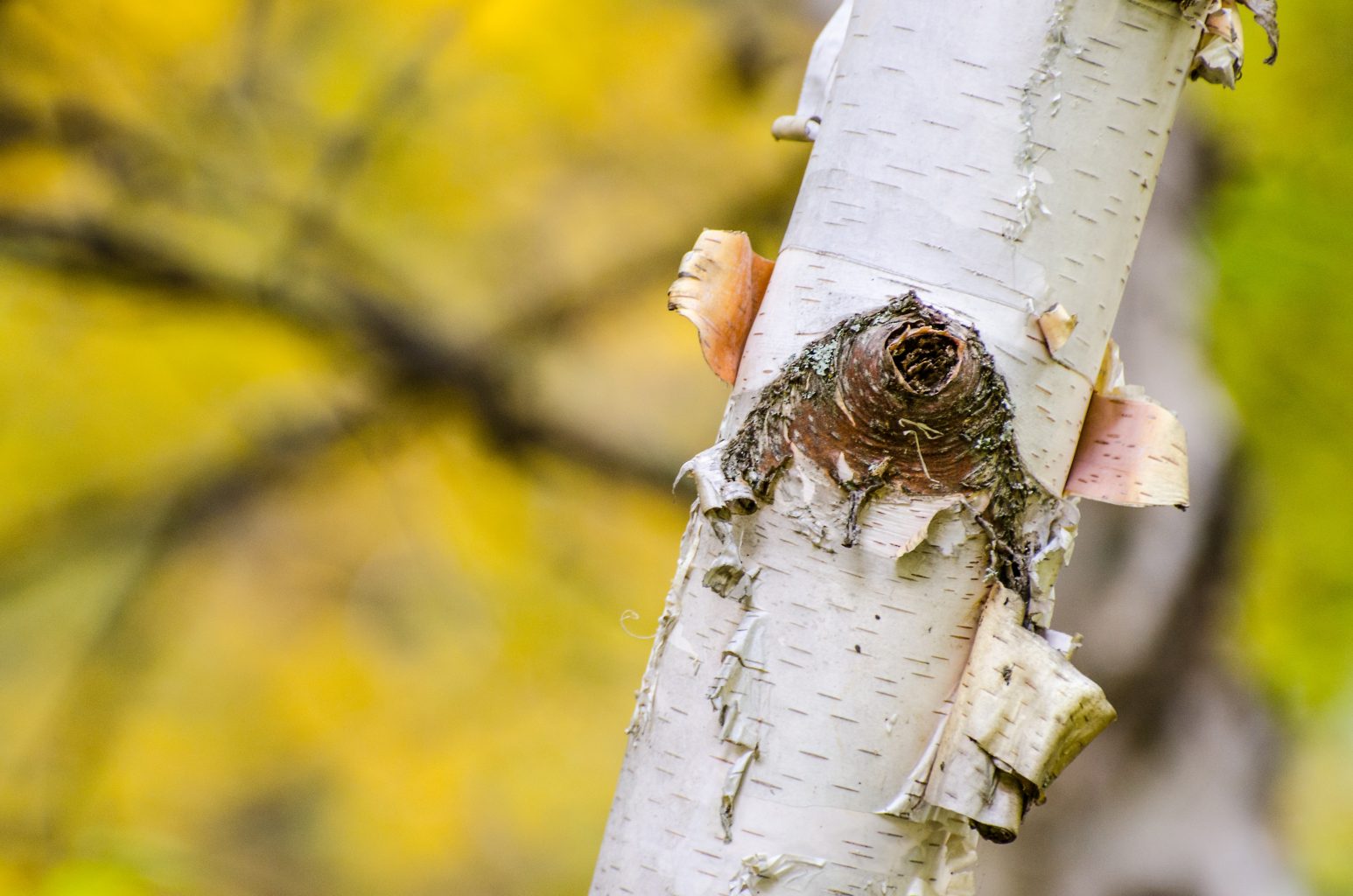
White birchbark played a vital historical role in the lives of Indigenous peoples for centuries. The bark of both white and yellow birch grows in layers, but the yellow was considered thin and weak. The white birchbark could often reach the thickness of shoe leather and it was more easily removed in large sheets in late spring when the sap moisture content is higher.
Strong, naturally light, waterproof and loaded with resin, birchbark dries into a hard form to hold its shape. The bark has a substance called betulin, which is an antibacterial with the advantage of slowing decomposition. Countless items vital to life were fashioned from the bark of the white birch: shelters, mats, household containers, baskets and the list goes on.
Birchbark canoes are especially fascinating. When complete, birchbark canoes were golden brown rather than white. The inner side of the bark was placed so it was showing on the outside because of being smoother and more attractive, with the further advantage of prolonging the life of the craft. Birchbark is waterproof, so the only sealant needed was along the seams. The sealing was accomplished with pitch from birch or black spruce trees mixed with a little deer tallow.
Birchbark scrolls called wiigwassabak were inscribed and this ultimately saved up to 400 years of history and stories of the Ojibwe in Minnesota. There have been discoveries of birchbark manuscripts from the Middle Ages in Russia, as well as Afghanistan, dating back 2000 years. In India, even today, Himalayan birch is still used to record sacred mantras.
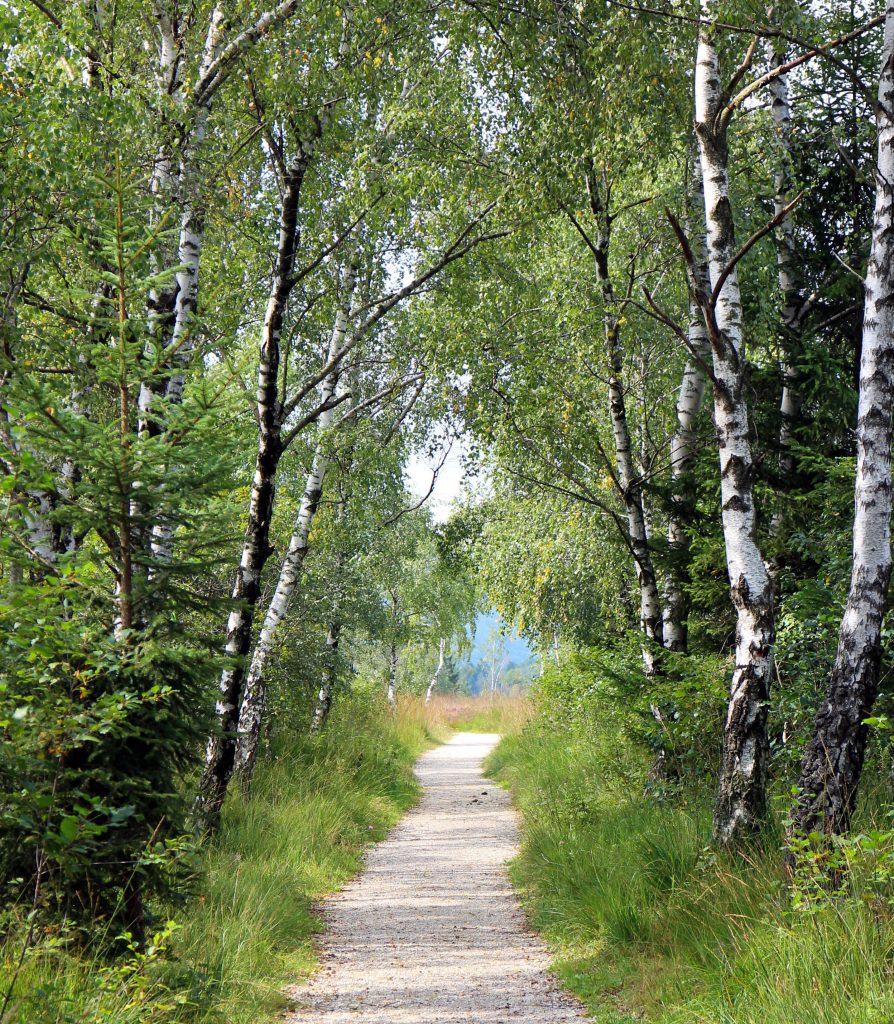
Woodland landscapes with birch trees have a gentle presence. There is an Ojibwe legend that tells of a time their people were having troubles because the winter was so cold. They sent a man named Waynaboozhoo to get fire from the Thunderbird who resided in the west.
Waynaboozhoo disguised himself as a rabbit so he could be invited into the Thunderbird’s home. Once he was inside, he quickly rolled in the fire and took off out of Thunderbird’s house, heading back home with the fire. Thunderbird was furious and began shooting lightning bolts after him.
In bunny form, Waynaboozhoo, was getting tired from dodging thunderbolts. When he called for help, the birch tree answered and offered shelter. Thunderbird’s lightning bolts singed black marks into the birch tree, but the little rabbit was protected and eventually the fire was brought to his people. That is how the birch tree got its black marks.
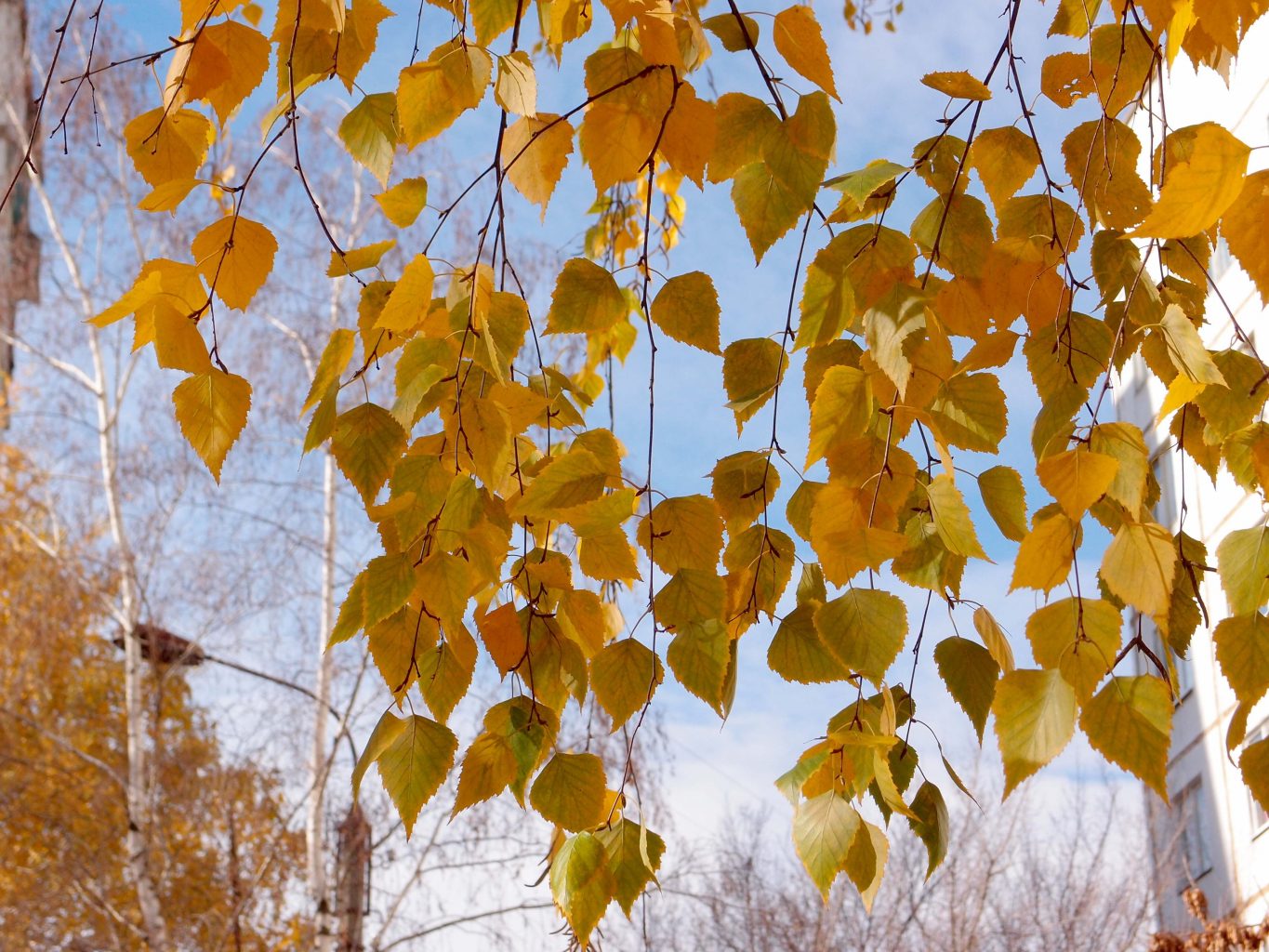
The genus name, Betula comes from an ancient Indo-European word, the root is “bherja”. This translates to “the bright tree”, referring to its light color. The words birch and bright also stem from the same root cluster in Indo-European as “shimmering, blazing, burning”.
A chemical called betulin in the outer layers of birch bark has its crystals arranged in such a way that it reflects light. This is what makes the white birch appears white. Betulin protects the tree from pests, solar radiation and the freeze/thaw cycles.
Birch bark is waterproof because the betulin molecules are “hydrophobic” or water-fearing but they also make the bark highly flammable. This is because the dry form of betulinic acid can form suspended particle clouds which explode when ignited, a great help in getting a fire started when it is raining.
To add to all of this, the white bark being loaded with betulin, is also the subject of extensive research and medical research. Betulin is the precursor of betulinic acid, a chemical which has antiviral, anti-inflammatory and anti-tumor properties.
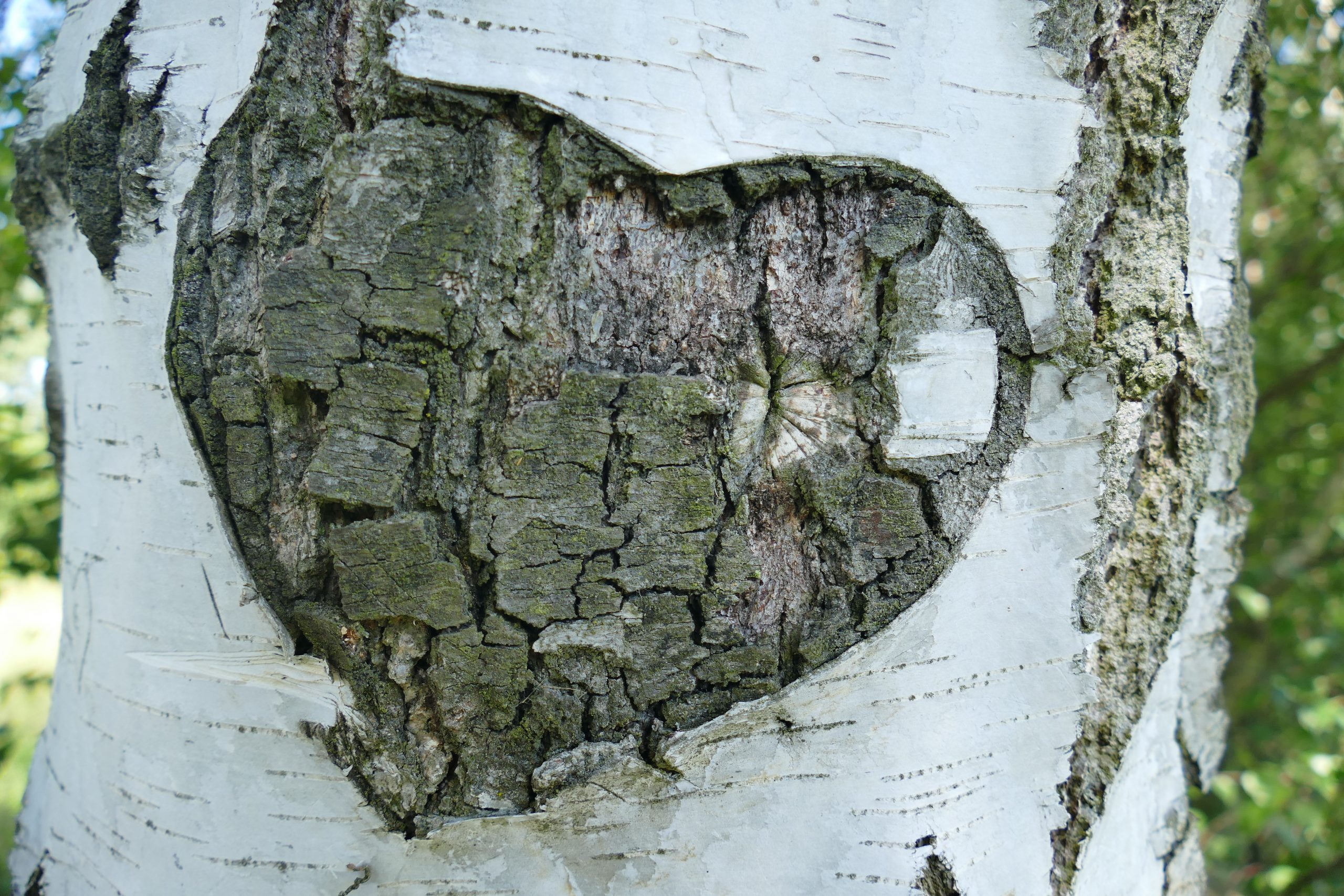
For those who love symbolism, the birch tree’s slender gracefulness embodies the ideal of elegant femininity and light-filled space. Many times, birch appear to grow out of one trunk, when they have actually joined trunks. It is said they show the nature of those who are gentle in nature and do not stand alone. By joining with others, they form close and supportive alliances.
Birch is also connected with illumination, insight and bringing light to dark places because of the connection to fire-starting. Birch has been used as a protective charm and a symbol of new beginnings by many cultures.
